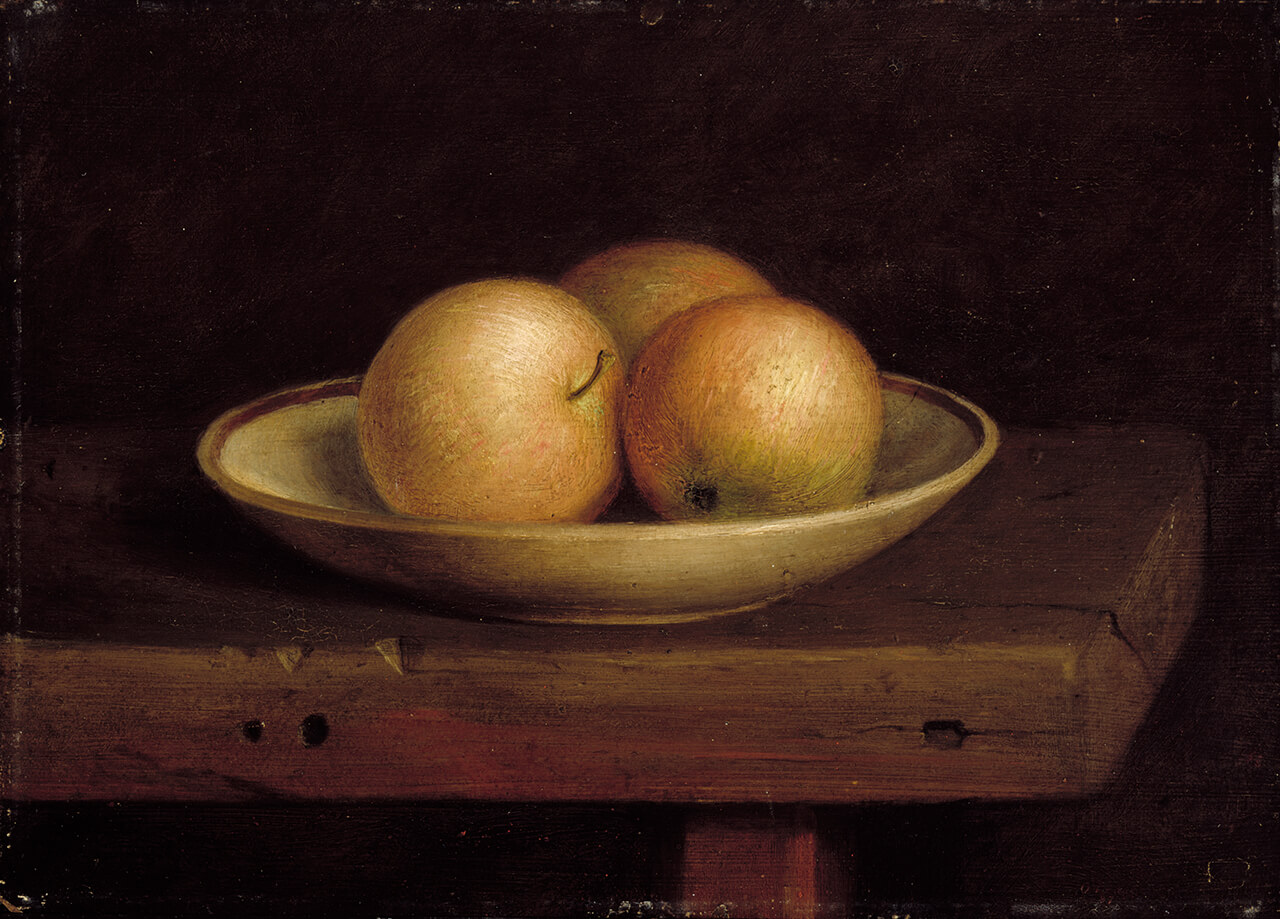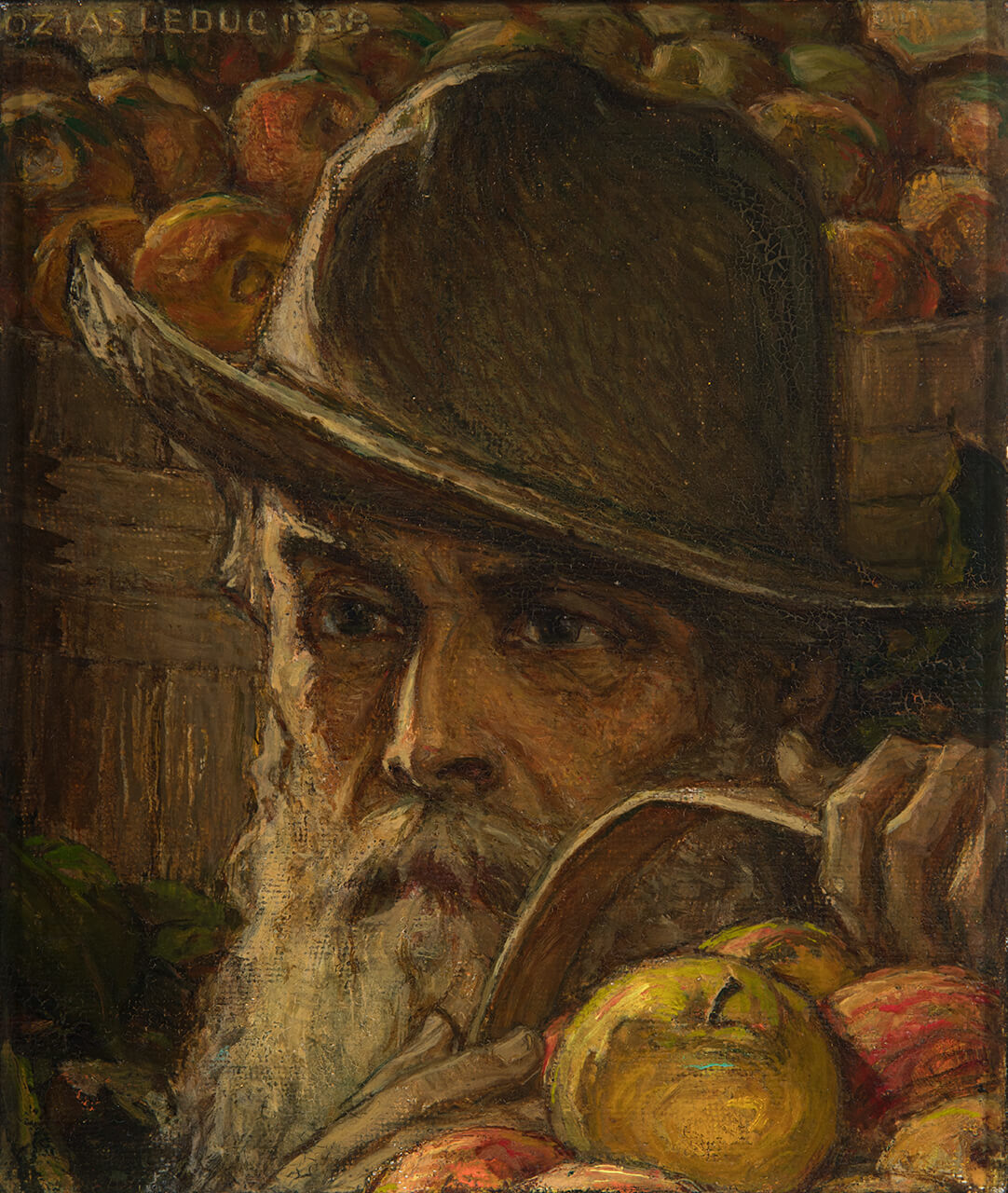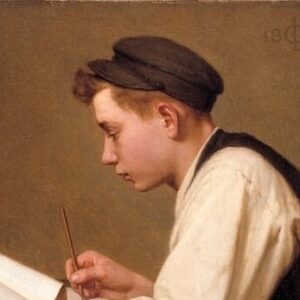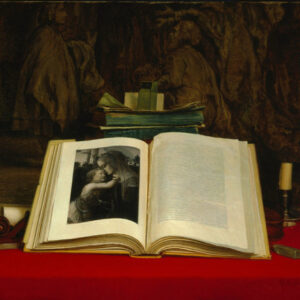The Three Apples 1887

Ozias Leduc, The Three Apples (Les trois pommes), 1887
Oil on cardboard, 22.7 x 31.7 cm
Montreal Museum of Fine Arts

Three apples, arranged in a shallow bowl on a wooden table with a damaged edge: a subject so simple that it evokes an entire universe. At the age of twenty-three, Leduc expresses the essence of Symbolism, which seeks to pierce appearances and reveal what is hidden behind the surface of objects and of the material world.
By choosing to show the apples as perfectly spherical, and grouping them in the bowl so that their base, stalk, and stem are visible, Leduc demonstrates both the complexity and the unity of the plant world. The three spheres haloed by the circle of the bowl appear to evoke the Christian Trinity. Indeed, the space occupied by the apples is bathed in a magical light that both emanates from them and is absorbed by them, while the surroundings and background remain dark.
The work of the carpenter and of the apple grower, trades practised by Leduc’s father, are at the heart of the picture. The spiritual father and the natural father are combined in this homage to creation. The painting celebrates the results of the workman’s labour and recognizes the importance of toil and creativity in both art and manual work, lessons Leduc learned from his childhood. He builds forms carefully through different brush strokes—long, delicately sharp ones for the apples and blunt, softened ones for the bowl and the table—in order to represent both nature and its transformation by humans. For Leduc, nature is the source of aesthetic experience, offering subjects for contemplation and inspiration, for the mind and the soul. This small picture, painted in the artist’s youth and never exhibited, was very important to him. In 1942 he gave it to his friend Paul-Émile Borduas (1905–1960), who safeguarded it with equal care; in 1988 it was given to the Montreal Museum of Fine Arts by Borduas’s widow.

 About the Author
About the Author
 More Online Art Books
More Online Art Books
 Acknowledgements
Acknowledgements